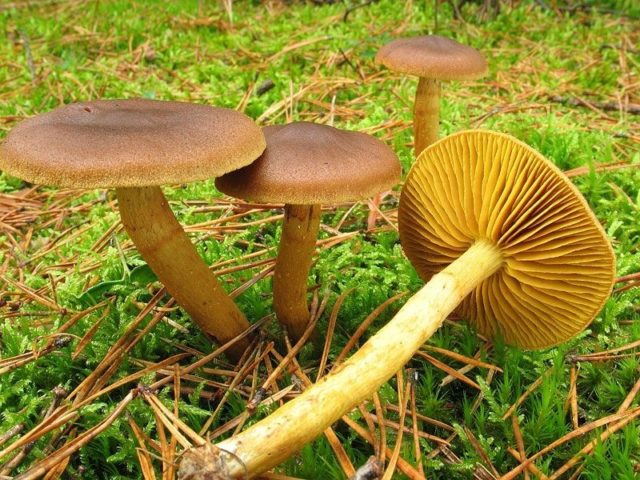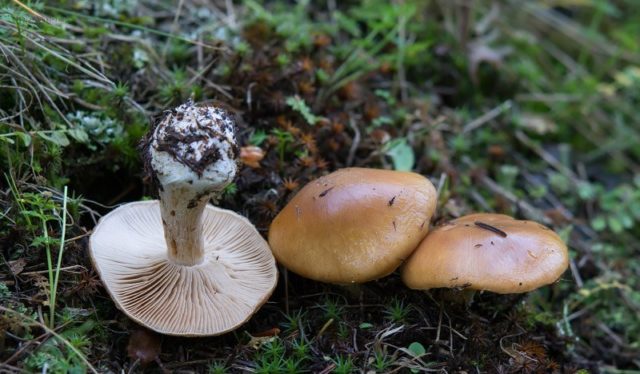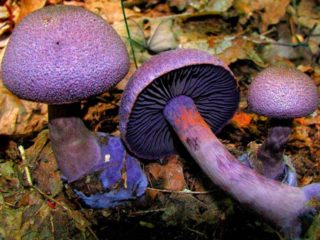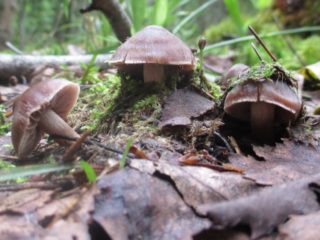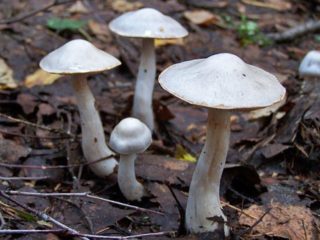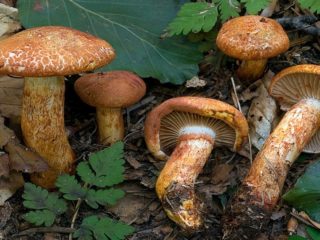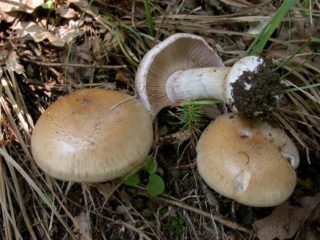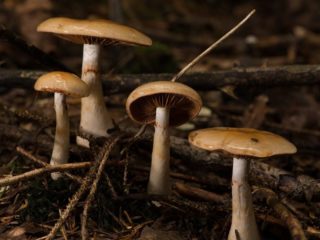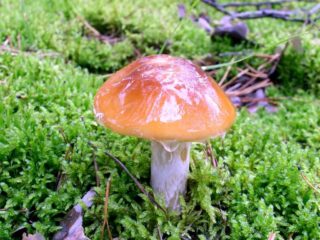Content
Mountain cobweb is a deadly poisonous member of the Cobweb family. A rare species, it grows in deciduous forests from July to October. If consumed, it causes kidney failure and leads to death. To protect yourself and your loved ones, you need to carefully read the external characteristics, view photos and videos.
What does the mountain web spider look like?
Mountain cobweb is an inedible representative of the mushroom kingdom. If consumed, it causes kidney failure and can be fatal if first aid is not provided.Therefore, acquaintance with the species should begin with an external description, photos and videos.
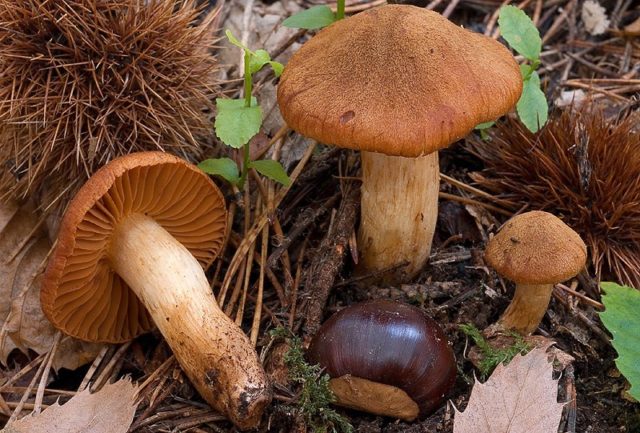
When consumed, it stops kidney function
Description of the cap
The cap of the mountain web spider is covered with matte skin with small scales. The orange-red surface reaches 9 cm, at a young age it has a hemispherical shape, and as it grows it partially straightens, leaving a small tubercle in the center. The spore layer is formed by wide, partially adherent plates. When young they are orange-coffee in color and become darker as they mature. Reproduction occurs by warty, oblong spores, which are located in a red powder.
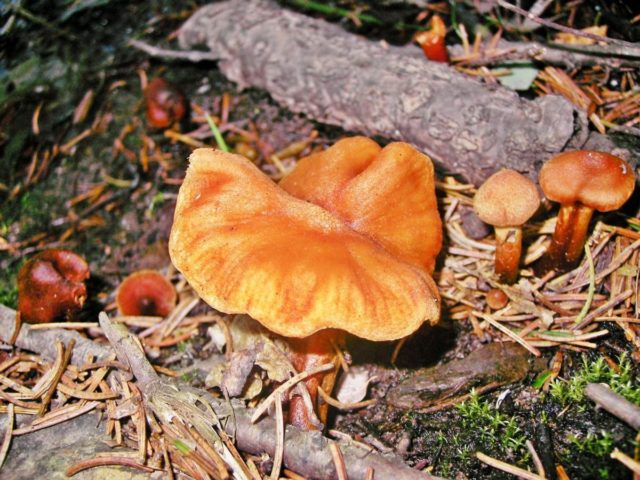
Grows in autumn in deciduous forests
Description of the leg
The thin leg, 7 cm long, has a cylindrical shape with a noticeable narrowing towards the bottom. The surface is covered with a fibrous peel of light lemon color. The yellow pulp has a pronounced rare taste; the color does not change with mechanical damage.

The leg is long, thin, there is no skirt
Where and how does it grow
Mountain spiderwort is rarely seen. It grows in single specimens, sometimes in small families, in deciduous forests, on acidic soil, next to birch and oak trees. The mushroom has similar edible counterparts, so this species is not recommended for an inexperienced gardener to collect.
Edible mountain spider web or poisonous
Rare pulp with a pleasant taste contains a dangerous substance - orellanin, which leads to kidney failure and death. The mushroom is inedible and dangerous because the first signs of intoxication appear 3-10 days after ingestion. During this time, kidney function deteriorates, and if no help is provided, they stop working and death occurs.
Symptoms of poisoning, first aid
Mountain cobweb is a very dangerous mushroom. The pulp contains a toxic substance, which slowly and gradually leads to impaired kidney function. On days 3-14 after eating a mushroom dish, the first symptoms of poisoning appear:
- weakness;
- hyperthermia;
- lumbar and epigastric pain;
- thirst;
- nausea, vomiting;
- migraine and tinnitus;
- lethargy and rapid fatigue;
- chills;
- drowsiness.
If assistance is not provided against the background of deterioration of the victim’s condition, diuresis gradually decreases, fluid begins to accumulate in the abdominal and pleural cavity, consciousness becomes confused, pain in the limbs, tremors and agony appear.
When the first signs appear, you should immediately call an ambulance. Before the doctors arrive, the following manipulations are performed:
- Gastric lavage - the victim is given a large amount of light pink solution of potassium permanganate.
- In the absence of stool, laxatives are needed.
- To reduce the absorption of the toxin into the blood, absorbents are given - 1 tablet of activated carbon per 10 kg of weight.
- Heat is applied to the abdomen and limbs.
Mushrooms are most dangerous for children, the elderly, and pregnant women, since due to reduced immunity, the toxin is absorbed into the blood more quickly, and the symptoms of poisoning become more pronounced.
Doubles and their differences
The mountain cobweb, like any forest inhabitant, has similar counterparts. These include:
- Cinnamon is an inedible species with a small yellow-coffee colored cap. The cylindrical leg is dense, colored to match the cap, without taste or smell. Grows singly or in small groups in deciduous and coniferous forests throughout September.
Inedible, but not toxic, causes mild poisoning
- Diverse - belongs to group 4 of edibility. The lamellar mushroom has a smooth, glossy surface of a light orange color and a round, smooth, velvety stem. The pulp is elastic, tasteless and odorless. The species grows in mixed forests and bears fruit throughout the warm period. I use it for food in fried, stewed form, only after boiling for half an hour.
After a long boil, the mushroom is suitable for preparing fried and stewed dishes.
Conclusion
Mountain cobweb is a very dangerous mushroom that can be fatal if eaten. Grows in acidic soil, among deciduous trees. In order not to harm your health, you need to carefully read the external description and, if detected, pass by.
